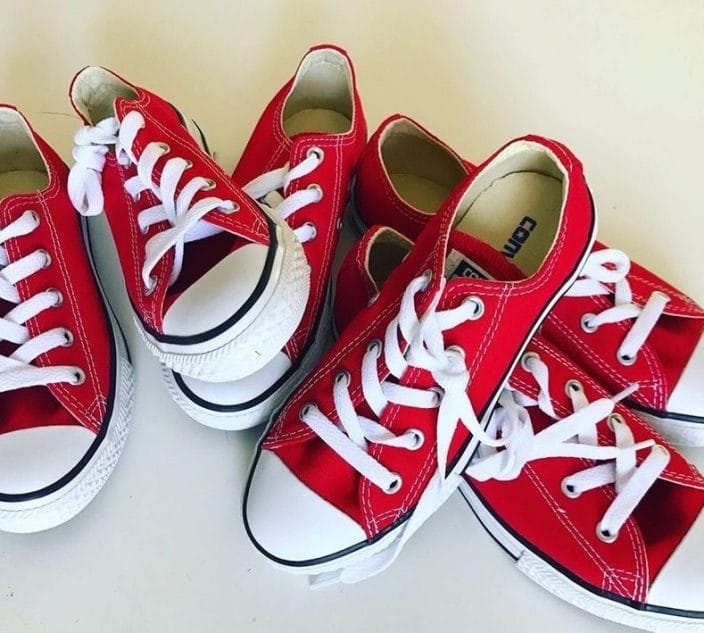A significant allergies and airlines report was released in Canada in 2016, and it does not contain good news for those of us concerned about adequate anaphylaxis readiness in the skies. A few news outlets rushed to accept the findings as gospel, with headlines such as the CBC’s “No Proof to Back Most Peanut Plane Fears, Inquiry Finds.” (Who measured “most peanut plane fears?” Answer: no one.)
In Allergic Living’s view, the report of the Canadian inquiry into peanut, tree nut and sesame allergies on airplanes is generally disappointing and, at times, disturbing.
Our biggest concerns are:
– A dismissive attitude toward the risk of accidental allergen ingestion for passengers who are 35,000 feet in the air.
– The lack of recommendations to train crews to be able to assist a passenger who is experiencing anaphylaxis.
– The rejection of advice to recommend epinephrine auto-injectors (rather than syringes and vials which require medical expertise) in on-board medical kits.
– A failure to even consider P.A. allergy announcements to other passengers. (The practice of requesting that others refrain from eating peanuts or nuts is undertaken on Canada’s WestJet, and the airline does not find it a problem to provide.)
As a journalist who has covered airlines and allergy issues over several years, I took the time to review the inquiry officer’s final report to the Canadian Minister of Transport, as well as two expert background reports and several stakeholder commentaries. Inquiry officer Mary-Jane Gravelle’s final report will have scope even beyond Canada’s borders, since government findings are likely to be cited as other countries weigh allergies and airline travel.
Gravelle was given the task of examining the effectiveness of in-flight allergy measures (such as Air Canada’s three-row nut and peanut buffer zone in economy) contained in Canada’s “Allergy Decision” of 2011, and to consider other measures. Her report recommends the following allergy accommodations for Canadian airlines:
- Allowing passengers with allergies to peanuts, nuts or sesame to wipe down their seats. She does not call for pre-boarding to do so.
- Training flight crews on signs and symptoms of an allergic reaction. But there is no finding for training them on what to do if such a severe reaction is in progress nor for teaching standard anaphylaxis emergency protocols, such as when and how to administer an epinephrine auto-injector.
- A reduced-size buffer zone (just the bank of seats that includes the allergic passenger). Crew would continue the current practice of asking passengers in the “zone” not to consume food with these ingredients.
Public Health Issue Missed
Since the report as a whole fails to grasp the public health significance of anaphylaxis during air travel, these recommendations fall quite short of the mark. The inquiry officer relied heavily on a consultant’s report from Dr. Matthew Greenhawt, an allergist based at the University of Colorado who has been a lead author on two studies of airlines and allergic reactions. The reasons Gravelle’s findings are so conservative relate directly to his report.
The reality of anaphylaxis is that it can turn dangerous extremely fast, as it has in the deaths of Natalie Giorgi, Andrea Mariano, Amarria Johnson, Simon Katz and several others over the past few years. Tragedies fortunately are not frequent, yet severe food reactions are increasingly so, with one U.S. study finding 39 percent of food-allergic children having had such an experience.
With air travel, you ratchet up the allergy risk by being 30,000 to 35,000 feet in the air, far from medical assistance.
But both the need for urgent action in an anaphylaxis emergency and remoteness from medical care barely get mentioned in Greenhawt’s expert report. “Aircraft flying at altitude constitute a specific concern for proper management of any medical event, including an allergic reaction” – is how he puts it.
From the outset of his report, the consultant speaks of the fears of food allergy families and their state of “hyper-vigilance and perpetual concern for safe accommodation.” He’s quick to mention that accommodations may inconvenience the majority without allergies. And, instead of an informed discussion about the fast-growing numbers who have a disease that requires vigilant avoidance of allergens, he goes on at length about how many people erroneously “think” they have a food allergy.
Airlines Report Plays Down Risk Factors
Greenhawt waits until the middle of his report to note that, in his own large, international study of allergies and airlines, he found that one-third of those who reported allergic reactions had symptoms that were likely anaphylaxis, but only 10 to 15 percent of them got epinephrine, the go-to medicine for a severe reaction. Also, rarely did passengers inform the crew of these potentially severe reactions.
These are high-risk medical situations. Why wouldn’t such important facts bear significant scrutiny in a government inquiry into allergies and air travel?
Even the widely reported dramatic increase in food allergies1 – a key factor in the public health concern about air travel – is barely alluded to the inquiry officer’s final report. It’s as if it was written before the food allergy epidemic occurred, with scant acknowledgment of 2.5 million Canadians and 32 million Americans directly affected by a disease that can have severe symptoms – and who also need access to travel by airplane.
Like a jet on takeoff, the prevalence of food allergy has climbed rapidly – from barely a blip on the radar in the 1990s to 6 percent across the Canadian population and more than 8 percent in the U.S. Peanut allergy, specifically, has tripled among U.S. children in a decade.
Instead of weighing implications of this new reality, Gravelle instead writes in the airlines report that “some circles have argued that discussion of peanut allergy as an epidemic is misleading, and that the arguments supporting this are circular and self-fulfilling.”
Strange Citations, Weighting
She gets this from Greenhawt, who bases his contention on three “sociologists.” They include Joel Stein, who’s actually an L.A. Times humor columnist, and medical sociologist Dr. Nicholas Christakis. The latter published an opinion article in 2008, which was widely assailed by leading allergy experts for distorting facts, such as using an allergy prevention study to conclude that students with established allergies didn’t need school accommodations, which he called “hysteria”. (Stein, by the way, recanted his dismissive view of food allergies – after his son developed anaphylaxis to nuts.)
It is ludicrous to see such citations in a report to advise a Minister of Transport who may take policy actions. Gravelle and Greenhawt are largely more factual, but the weighting of their topics should be controversial. Why, for instance, is the subject of whether there could be safe levels of exposure to an allergen given far greater elaboration than topics such as anaphylaxis and accidental ingestion risk? Do we want to be testing unverified threshold levels at 35,000 feet?
Gravelle writes “that there is little to no evidence that there is a risk of anaphylaxis due to inhalaton or dermal contact with peanut, nut or sesame seed allergens while on board aircraft,” which she bases on a lengthy data discussion from Greenhawt. She continues that, “rather, any risk that might exist would be as a result of accidental ingestion.”
Here’s the problem: ingestion risk is tossed out as some remote possibility when there is evidence to suggest otherwise. The report makes no mention, for instance, of Mayo Clinic research presented at the AAAAI allergists conference in March 2016. It found that peanut protein lingers on airplane tray tables, even when an airline doesn’t serve the legumes as snacks. In Greenhawt’s own study of 3,273 participants, slightly more than 10 percent reported having an in-flight reaction, about the same level found in a 2008 University of California study.
So allergic reactions are occurring and, if the evidence appears to be that peanut and nut dust settles quickly, then inadvertent ingestion is likely more common than has been appreciated.
Gravelle’s other consultant report is from the National Research Council of Canada (NRC), with a focus on allergens in cabin air. The NRC scientists agree the bigger in-flight risk is the settling of peanut or nut particles. They conclude from the data that “reactions from unnoticed ingestion are being incorrectly attributed to inhalation, including ingestion as a result of touching a surface on which the allergen has settled and unknowingly ingesting the allergen.” Why then does ingestion risk merit so little attention in Gravelle’s report?
Other Experts’ Views
In hearings that preceded Canada’s “Allergy Decision,” two other allergists – Dr. Gordon Sussman and Dr. Peter Vadas – recommended a buffer zone approach to exclude the food surrounding a person, largely due to the risk of accidental contact and ingestion. Greenhawt is adamantly opposed to buffer zones, arguing there is no scientific proof of their effectiveness or purpose.
It’s fine that experts don’t all agree – but why was only one expert from the community of allergists given the last word on this?
Since anaphylaxis can move to a crisis in a matter of minutes, it’s crucial that both allergic passengers and airline crews are prepared. Greenhawt does ultimately recommend: providing crew training on the symptoms of allergic reaction; crew training on how to treat with a vial/syringe or auto-injector; that airlines “strongly consider” keeping epinephrine auto-injectors rather than needles and syringes in the airline medical kit; and the importance of wiping down seating areas.
But given how he plays down the chances of anaphylaxis on an airplane throughout the report, it’s hardly a surprise that Gravelle opts for the most basic crew training and chooses not to recommend stock auto-injectors. Most of the airlines also objected to having to keep auto-injectors. (Unlike the U.S. situation, Canada’s auto-injector prices have remained stable.)
Incidents and Omissions
It might have helped Gravelle’s understanding of an anaphylactic emergency in the air had she been informed of the case of Dr. Patricia Leonard, who struggled to even find the standard kit’s epinephrine vial while requiring two doses for a 4-year-old having a severe allergic reaction over the Atlantic Ocean. Leonard’s experience is not a study, so she’s ignored.
Similarly, the efforts of a coalition of U.S. allergy organizations to get auto-injectors onto airplanes and crew training on them get only fleeting mention. Gravelle might have benefited from knowing that the president of the AAAAI, the leading allergists’ association, compares the need for in-flight auto-injectors to the inclusion of automated external defibrillators (AEDs) for cardiac events.
There are other omissions. Gravelle shows no awareness that a passenger suffering anaphylaxis can become incapacitated and need assistance to administer an auto-injector. Her report bears little relation to problems such as allergic passengers being thrown off flights due to many airlines offering poor communication of allergy policies and their crews’ frequent lack of understanding of food allergies.
Canadian allergy groups and the CSACI (the Canadian allergists’ society) backed the idea of stock epinephrine and crew training on how to respond in case of anaphylaxis. Food Allergy Canada recommends leaving the peanut or nut buffer zone at its current size, until there is science to prove whether it helps or does not. It suggests an in-flight announcement, such as WestJet for many years would make on request. These are all reasonable accommodations that [now former] Transport Minister Marc Garneau needs to weigh, but won’t find among the recommendations he has been handed.
With our snack culture in the skies, it’s important to take seriously the medical needs of those traveling with severe food allergies. It is disturbing that the minister has been given such an odd and flawed report – one that is offering recommendations on how to manage anaphylaxis aboard an aircraft, while simultaneously diminishing the risks, the reactions and the disease prevalence. The minister needs to hear out informed voices of the traveling public, such as Food Allergy Canada and leading CSACI-member allergists. In Allergic Living’s view, this report simply should not stand as the last word on airlines and allergies in Canada.
I would encourage travelers to read the report here. If you also find it a less than satisfactory solution to the issues of allergies and airlines, please let the Minister of Transport and the Canadian Transportation Agency know.
Article statistics updated: May 2022
- The CDC reports an approximately 50% increase in food allergies in children between 1997 and 2011. Mount Sinai’s Icahn School of Medicine, McGill University and Northwestern University researchers have also documented the increase in food allergies in North America.







